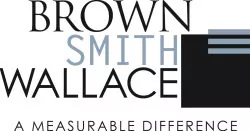Note to readers: As of this writing, efforts are underway in Washington to repeal the Affordable Care Act. Both the Republican-majority House and Senate have approved a resolution to begin repeal proceedings, while President Trump has issued an Executive Order calling for the law's "prompt repeal." Please bear this in mind as you read the article below, and consult your benefits advisor for the latest developments.
IRS Form 8941, "Credit for Small Employer Health Insurance Premiums," is used by eligible employers to calculate the small business health care credit. If you own or manage a small business and think your company may qualify for the tax break, be sure to familiarize yourself with the latest version of this important form.
General Qualifications
The small business health care credit generally is available to employers that:
- Have 10 or fewer full-time equivalent employees (FTEs)
- Pay average annual wages of less than $25,000 (indexed for inflation)
- Contribute a uniform percentage of at least 50% of the premium costs for employee health insurance coverage obtained through the Small Business Health Options Program (SHOP) Marketplace
The maximum tax credit is generally 50% of premiums paid (35% for tax-exempt eligible small employers). A partial credit is available for qualifying employers that meet the SHOP premium contribution requirement and:
- Have fewer than 25 FTEs
- Pay average annual wages of less than $50,000 (indexed for inflation)
Once calculated, the tax credit is claimed as a general business credit on Form 3800 (or, by tax-exempt small employers, as a refundable credit on Form 990-T).
New Lines
The 2016 form adds a new Line C that implements the two-consecutive-year limitation for the credit that became effective in 2014. If the taxpayer confirms on line C that it claimed a credit in 2014, a Form 8941 cannot be filed in 2016. References to the filing year have been updated, but the applicable maximum annual wages amount remains unchanged at $52,000. (Although the inflation-adjusted threshold for 2016 is $51,800, the rounding rule required for calculating average wages results in $52,000 remaining the effective limit for purposes of the 2016 Form 8941.)
The instructions identify the information needed to calculate the tax credit and include worksheets to determine the number of employees, average wages and average premium for the small group health insurance market for each state where the employer has employees.
In addition, the instructions have been updated to incorporate Notice 2016-75 transition relief for the three Wisconsin counties in which no SHOP coverage was available in 2016. They also include the transition relief for employers in certain Iowa counties without 2015 SHOP coverage (created by IRS Notice 2015-08), because eligible employers with non–calendar-year plans can claim a tax credit for the portion of their 2015 plan year that wraps into 2016.
Finally, the list of average premiums, by county, for all 50 states plus the District of Columbia has been updated for 2016 (An employer's credit may be reduced if the employer pays premiums greater than the average for the small group market for the state in which its employees work.)
Opportunity to Save
The small business health care credit has had trouble taking hold. In its early years, agencies tried outreach to small employers that may not have realized the credit was available. Changes effective in 2014 brought in the requirement of SHOP participation (other than for employers in the identified counties where such coverage isn't available) and the two-consecutive-year limitation for claiming the credit — both of which are likely to see use drop even further.
Nevertheless, there may be tax savings here for eligible employers. Work with your tax advisor to determine whether your company qualifies for 2016 and, if so, how to complete the necessary forms and worksheets.
Agencies Issue Implementation FAQs
Late last year, the Department of Labor, Department of Health and Human Services and IRS jointly issued three new FAQs related to compliance with the Affordable Care Act. Here are summaries of the major topics covered:
Special enrollment. The FAQs confirm that, if employees and their dependents lose eligibility in individual market coverage (including coverage from a Health Insurance Marketplace), they're entitled to midyear special enrollment in an employer-sponsored group health plan for which they're otherwise eligible and had previously declined to enroll in. This special enrollment opportunity applies if the loss of eligibility is for reasons other than failure to timely pay premiums or termination of coverage for cause (such as making a fraudulent claim or an intentional misrepresentation of a material fact).
Individuals are entitled to special enrollment in group health plan coverage regardless of whether they may enroll in other individual market coverage inside or outside a Marketplace. In addition, under the Health Insurance Portability and Accountability Act, a special enrollment right applies to a loss of eligibility for health insurance coverage regardless of whether the health insurance coverage is sponsored by an employer. This is because the act's definition of "health insurance coverage" isn't limited to employer-sponsored coverage.
Preventive services. Noting that the Health Resources and Services Administration (HRSA) updated its Women's Preventive Services Guidelines on December 20, 2016, the FAQs explain that the updated guidelines apply for plan years beginning on or after December 20, 2017. Until the new guidelines become applicable, nongrandfathered group health plans and insurers are required to provide coverage without cost-sharing consistent with the previous HRSA guidelines for any items or services that continue to be recommended.
The updated guidelines address a number of specific items and services — including breast cancer screening, breastfeeding services and supplies, contraceptives, and well-woman preventive visits.
Qualified Small Employer Health Reimbursement Arrangements (QSEHRAs). The FAQs affirm that previous guidance on the application of the Affordable Care Act to Health Reimbursement Arrangements (HRAs) and Employer Payment Plans (EPPs) remains in effect. The guidance generally prohibits HRAs and EPPs from being used to buy individual health insurance coverage unless that coverage is limited to excepted benefits or the arrangement is offered only to retirees.
The previous guidance doesn't, however, apply to QSEHRAs because these arrangements, as defined by the 21st Century Cures Act for years beginning after December 31, 2016, aren't group health plans. The FAQs clarify that the act's retroactive extension of the Notice 2015-17 reporting and excise tax relief for EPPs is limited to EPPs that pay or reimburse only individual health insurance premiums or premiums for Medicare Part B or Part D.
EPPs that qualify for the relief (applicable to plan years beginning on or before December 31, 2016) will be considered minimum essential coverage that precludes covered individuals from qualifying for premium tax credits under Internal Revenue Code Section 36B. The FAQs also explain that the extension has no effect on the relief in Notice 2015-17 for certain S corporation health care arrangements for 2% shareholder-employees.
If you have questions about health care credit qualifications, please contact Ron Present, Partner and Health Care Industry Group Leader, at rpresent@bswllc.com or 314.983.1358.
The content of this article is intended to provide a general guide to the subject matter. Specialist advice should be sought about your specific circumstances.


